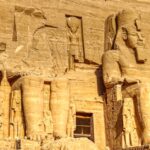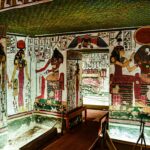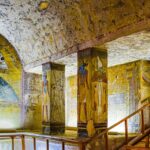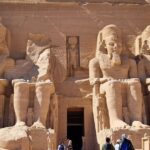Tag: Ramses II
-

Pharaohs Who Changed History: Power, Mystery, and Eternal Fame
Introduction For millennia, the pharaohs of Ancient Egypt have stood as symbols of power, divinity, and grandeur. They were more than just kings and queens—they were considered gods on earth, guiding one of history’s most remarkable civilizations. Among the countless rulers who sat…
-

Secrets of the Valley of the Kings
Explore the Valley of the Kings, the legendary burial site of Egypt’s pharaohs, and uncover the secrets hidden beneath its sands. IntroductionHidden among the rugged cliffs of Luxor’s west bank lies the Valley of the Kings, one of the most famous archaeological sites…
-

Ramses II: The Great Builder of Egypt
Introduction Among the many rulers of ancient Egypt, few names shine as brightly as Ramses II, also known as Ramses the Great. Reigning for an extraordinary 66 years during the 19th Dynasty (1279–1213 BCE), he left behind a legacy of monumental architecture, military…
-

Abu Simbel the complete story
Located in southern Egypt, Abu Simbel is an ancient temple complex that stands as a testament to the grandeur of Ancient Egypt. It is one of the most recognizable symbols of Egyptian civilization and a UNESCO World Heritage site. Abu Simbel, built during…
